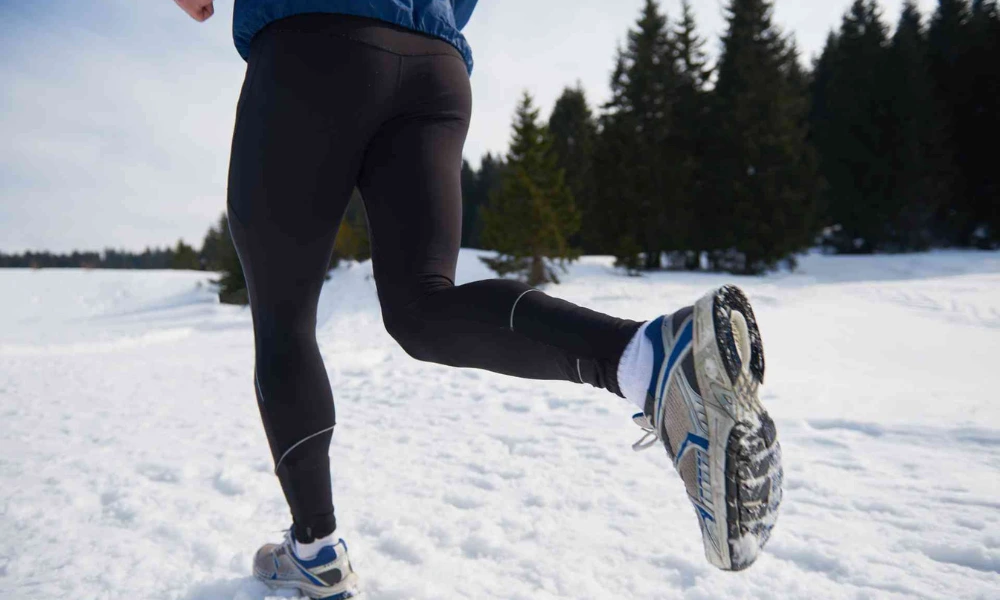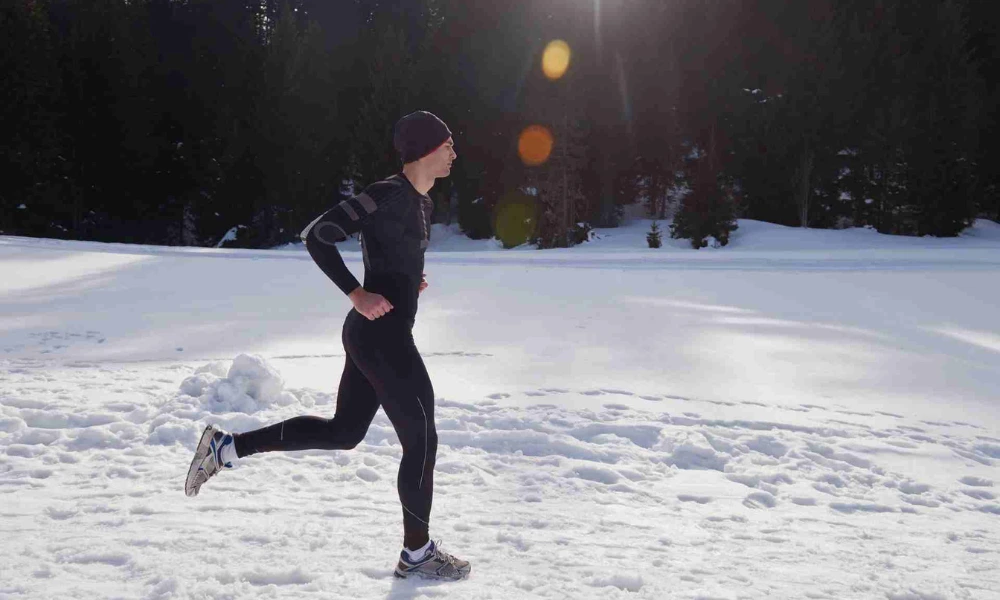Cardio exercises such as running, cycling, swimming, and skiing are proven to increase an athlete’s endurance, improve the cardiovascular system, and prolong the body’s youthfulness. To achieve this effect, training should be regular all year round.
The Dangers of Running in Winter

Running is a demanding sport. Due to the high vertical load and constant impact load, there are many risks for athletes, especially beginners. These include back, lower back, knee, and foot problems. It is recommended that runners run on a soft surface—the ground, a soccer field, or grass. The surface causes half of the issues in the running.
Problems arise in the transition from hard to soft, soft to hard, synthetic to asphalt, and asphalt to ground. We went from the playpen to the street and immediately got sore knees.
Winter is a special time for running—it’s cold, slippery, and hard. Therefore, shoes with shock-absorbing properties and adhesive (non-slippery) surfaces should compensate for the complex and slippery surfaces.
What Rules You Should Follow When Running in Winter
You can run at any temperature, but I do not advise it when it is below -20 ° outside. At such a low temperature, you can burn your lungs. If the speed is low, the body cannot warm up to a degree to resist an intense frost, increasing the likelihood of getting sick. The athlete should inhale through the nose, which warms the air, and exhale through the mouth because it is more comfortable.
Choose a pace that allows you to breathe correctly. Watch your heart rate: if you run with a high heart rate, you can get a chilled nasopharynx and get sick if you quickly inhale cold air through your mouth. Balaclavas, scarves, and shawls should be used cautiously, as they obstruct air and complicate breathing.
How Winter Warm-up Differs From Summer Warm-up
Ideally, the warm-up should be done indoors to stretch and warm up. Its task is to prepare the muscles and ligaments, and it can be done most effectively in the warmth, not outdoors. The warm-up helps increase your heart rate, gradually getting your heart into a training rhythm. Then, we do a short pre-workout stretching session: knead knee joints, thigh muscles, feet, and shoulder girdle (up to 9 seconds for each element).
How Long Can You Run in Freezing Temperatures
The time depends on individual parameters, which are determined by your fitness level, the weather, and the training objectives. If there is anaerobic work, allowing a longer loading time is possible.
Suppose you must regulate your heart rate, acceleration, speed, and strength load. In that case, you must regulate your heart rate in winter, which is essential because its changes may not be noticed due to distorting factors that do not give an adequate assessment (several layers of clothing, for example).
When You Shouldn’t Run in Winter

Diseases in the acute period of the respiratory tract and acute diseases in general. You should never run in the cold if you have a disease such as sciatica. If the joints hurt, it is also better not to expose them to hypothermia. It is important to dress correctly: much dressed – sweat, sweat – quickly freeze. These risks should be excluded.
What Kind of Equipment You Need for Jogging in Winter
Let’s not delve into brands and characteristics, but list the main layers that are needed for running in the cold:
Running shoes should have a shock-absorbing sole to bind to the hard surface of icy pavement. The material should be frost-resistant, and the tread should be deep to avoid slipping.
Socks. Wearing unique thermal socks that adjust to your body temperature and retain external moisture is best.
Thermal underwear. It is recommended that thermal underwear be made of a minimum percentage of wool. Wool wicks moisture well and keeps you warm. Thermal underwear is considered underwear worn as the first layer.
You can wear a sports suit or a set of pants and a sweatshirt. Choose what makes you feel more comfortable—tight-fitting clothes or looser clothes. If it’s below -15 °C outside, you can choose a tracksuit with a fleece lining and membrane, which prevents moisture from outside and provides additional heating.
Take a closer look for running jackets with “insulate” technology. This strong, wear-resistant, warm, light, and thin material migrated from astronautics to sports jackets, pants, gloves, and hats, which are still used.
Gloves. Hands are the first to freeze when running. You can’t do without gloves during training – they protect from wind, wrap-around, and insulate your hands. It is better to use moisture-wicking models. Wool or fleece will help keep you warm.
Buff or scarf. The neck must be covered, and if the face is sensitive to frost, it can also be covered. A centimeter of free space should remain between the scarf and lips to make breathing easier.
Wrapping Up
Listen to your body. If you feel that you are getting cold, your sweat cools down, and increasing the pace is no longer possible, it is better to run to the house. Freezing should be only at the beginning of the cross. After 5-10 minutes of running, you should be warm. It does not get warmer – then you are too lightly dressed.
Do not be afraid of winter. Modern clothing and footwear technologies allow you to run in any weather. Training in the cold hardens both body and character. When the snow melts and the roads become habitually smooth and clean again, your results will be higher. The main thing is to have the desire!




